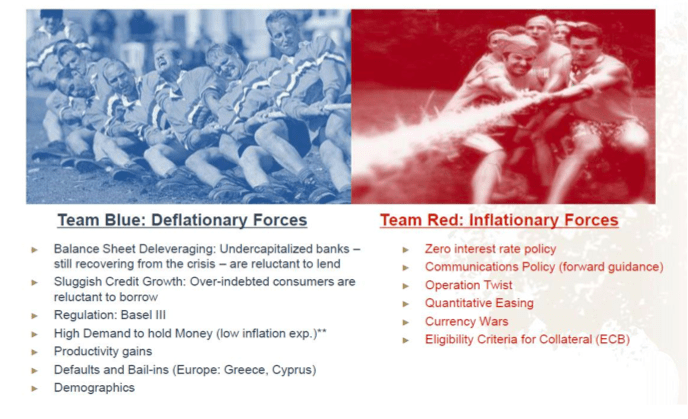 [Editor’s note: This essay was penned by Tim Price, a London-based wealth manager and editor of Price Value International.] Shortly before leaving the Fed this year, Ben Bernanke rather pompously declared that Quantitative Easing ‘works in practice, but it doesn’t work in theory.’
[Editor’s note: This essay was penned by Tim Price, a London-based wealth manager and editor of Price Value International.] Shortly before leaving the Fed this year, Ben Bernanke rather pompously declared that Quantitative Easing ‘works in practice, but it doesn’t work in theory.’
There is, of course, no counter-factual.
We’ll never know what might have happened if the world’s central banks had not thrown trillions of dollars at the banking system, and instead let the free market work its magic on an overleveraged financial system.
But to suggest credibly that QE has worked, we first have to agree on a definition of what ‘work’ means, and on what problem QE was meant to solve.
If the objective of QE was to drive down longer term interest rates, given that short term rates were already at zero, then we would have to concede that in this somewhat narrow context, QE has ‘worked’.
But we doubt whether that objective was front and centre for those people – we could variously call them ‘savers’, ‘investors’, or ‘honest workers’.
As James Grant recently observed, it’s quite remarkable how, thus far, savers in particular have largely suffered in silence.
So while QE has ‘succeeded’ in driving down interest rates, the problem isn’t that interest rates were / are too high.
Quite the reverse: interest rates are clearly too low – at least for savers.
All the way out to 3-year maturities, investors in German government bonds, for example, are now faced with negative interest rates. And still they’re buying.
This isn’t monetary policy success; this is madness.
This post was published at Sovereign Man on October 27, 2014.

 Follow on Twitter
Follow on Twitter
Recent Comments